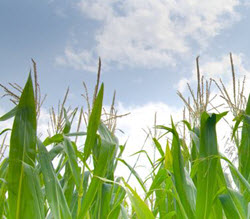 Farmers use pesticides to protect crops from insects and disease as pesticides are necessary to create the volume of food that our population requires. Without them, we would not be able to grow enough crops to feed the world—they are a necessary evil. Government agencies such the Food and Drug Administration (FDA) in the United States and pesticide manufacturers, however, work hard to educate farmers on how to minimize their use. However, sometimes farmers add too much which leaves a residue. Upon harvest, farmers wash the fruit and vegetables. Once complete the crop then makes its way to the wholesaler and eventually, the supermarket. Even so, there may still be pesticide residue on the produce, which is why government agencies randomly pull produce from store shelves for testing of maximum residual limits (MRLs) and we are encouraged to wash our food before consuming it.Download the Tech Note >
Farmers use pesticides to protect crops from insects and disease as pesticides are necessary to create the volume of food that our population requires. Without them, we would not be able to grow enough crops to feed the world—they are a necessary evil. Government agencies such the Food and Drug Administration (FDA) in the United States and pesticide manufacturers, however, work hard to educate farmers on how to minimize their use. However, sometimes farmers add too much which leaves a residue. Upon harvest, farmers wash the fruit and vegetables. Once complete the crop then makes its way to the wholesaler and eventually, the supermarket. Even so, there may still be pesticide residue on the produce, which is why government agencies randomly pull produce from store shelves for testing of maximum residual limits (MRLs) and we are encouraged to wash our food before consuming it.Download the Tech Note >
Then enter the food testing lab which is charged with testing foods for these MRLs, and there are different methods for testing these limits including targeted and non-targeted analysis. Using non-targeted analysis, the lab could miss a contaminant if they do not specify their search. The X500R mass spec changes all that though because it can do a full scan of all chemicals in your sample and search for anything unusual. You may see a strange peak in results and thus determine further research must be performed to rule out any contaminants. Thus, was the topic of a recent technical note, Using the X500R QTOF System and SCIEX OS Software to Identify and Quantify Food Residues.
In this note, researchers could show how the method was successfully applied to EU proficiency test samples and store-bought fruit and vegetable samples. Pesticides were automatically identified by matching retention time, accurate mass and isotope pattern of the molecular ion and MS/MS library searching using SCIEX OS software. In the same data processing step, compounds were quantified, and unknown samples were flagged when a user-defined reporting level was exceeded.
Are you looking to elevate your food testing lab’s capabilities? Visit the X500R product page for more information.






 Contact Support
Contact Support
0 Comments